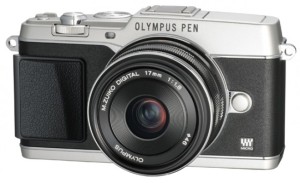A tiny, automatic camera and app that gives you a searchable and shareable photographic memory.
The world’s smallest wearable camera
(Sample photos are finally here!)
The Memoto camera is a tiny camera and GPS that you clip on and wear. It’s an entirely new kind of digital camera with no controls. Instead, it automatically takes photos as you go. The Memoto app then seamlessly and effortlessly organizes them for you.
Easy and effortless
The camera has no buttons. (That’s right, no buttons.) As long as you wear the camera, it is constantly taking pictures. It takes two geotagged photos a minute with recorded orientation so that the app can show them upright no matter how you are wearing the camera. And it’s weather protected, so you don’t have to worry about it in inclement weather.
The camera and the app work together to give you pictures of every single moment of your life, complete with information on when you took it and where you were. This means that you can revisit any moment of your past.
Long battery life
The camera’s batteries won’t need to be recharged until after approximately 2 days of use. To recharge the camera’s batteries, you connect the camera to your computer; at the same time the photos are automatically uploaded to Memoto’s servers. There are no buttons to press. You just wear the camera, then charge it and wear it again.




